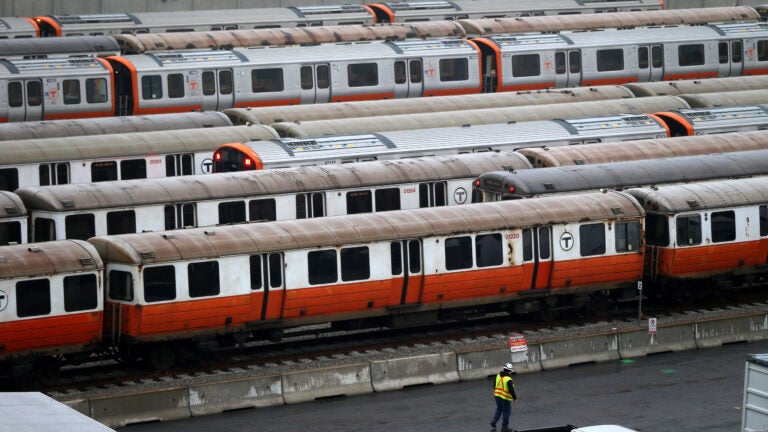Renting
Which T lines have the most expensive rents? Which ones have the least?

Location is everything, as they say.
Boston renters seeking to snag a deal often cost-compare different neighborhoods when looking for their next apartment. But there’s also savings to be had just by comparing apartments near different MBTA stations, a new study by ApartmentAdvisor shows.
In fact, renters may save thousands a year in some areas just by moving one stop away.
ApartmentAdvisor, the Cambridge-based apartment listings and information website, analyzed the median rent for one-bedroom units within a half-mile radius of every MBTA stop in Greater Boston. (Those numbers were compiled by analyzing listings on the platform’s website in February, March, and April, according to the report.)
“Many renters in Boston are willing to live in whatever neighborhood offers them the best deals, but with one catch: They just want proximity to public transportation,” the study says. “It’s the best way to get in and out of the center of the city without a car and, with its many delays, the bane of many a Bostonian’s existence — but for better or worse, the T is a necessary evil for renters.
“We wanted to find out how much renters are paying to live close to the train in Boston by taking a look at the median rent price of a one-bedroom apartment within a half-mile radius (about a 10-minute walk) of each T stop.”
Generally speaking, the study found that the closer an MBTA station is to downtown Boston, the higher the rent is.
South Station ranked as the most expensive, with the median rent for that area clocking in at $3,680. The other most expensive stops on each line included Tufts Medical Center Station on the Orange Line at $3,565 and a two-way tie for third between Boylston and Copley stations on the Green Line at $3,500, the analysis says. Lastly, the Blue Line’s Bowdoin Station typically sets renters back $3,000 a month.
But renters looking to move can save quite a bit by not going that far in some pockets of Greater Boston.
On the Red Line, there is a $948 difference between Dorchester’s JFK/UMass Station at $2,921 and the adjacent stop at the North Quincy Station, where the median rent is $1,973 — the largest price differential between two subsequent T stations, data provided in the study show.
On the MBTA’s Orange Line, there’s savings of $553 between the $3,353 median rent around Community College Station and the $2,800 rent by North Station.
Elsewhere, on the Blue Line, the largest difference of $338 can be found between the Aquarium and State stations, where rents are $2,662 and $3,000, respectively, according to ApartmentAdvisor.
On the Green Line’s B, C, and D branches, which share several stops between downtown and Kenmore Square, the largest price difference is $525 between the Copley and Hynes Convention Center Stations, where rents are $3,500 and $2,975, respectively. On the E branch, there is a $503 difference between North Station and the Science Park/West End Station, where rents are about $2,800 and $3,303, respectively the study shows.
Of the eight stops the MBTA’s Mattapan Trolley makes, there is a $125difference between the Central Avenue and Valley Road stations, which have median rents of $2,175 and $2,300, respectively.
On average, the Orange Line is the most expensive of the T lines to rent near, with an average monthly rent of $2,938, according to ApartmentAdvisor.
“When looking at the top 10 most expensive T stops to rent an apartment near, half are Orange Line stops,” the study says. “Even though the Orange Line also services more affordable neighborhoods like Jamaica Plain and Roxbury, the ultra-high prices near downtown around stops like Tufts Medical Center ($3,565), Chinatown ($3,485), and Back Bay Station ($3,421) drove the high average across the line.”
The Blue Line, meanwhile, was found to be the least expensive, “with the average price across the whole line coming out to $2,605,” according to the study.
“Unlike the other train lines, the Blue Line had no stops on our list of top 10 most expensive stops to rent near,” the report says. “Its three most expensive stations — Bowdoin Station, Government Center, and State Street — all tied for its most expensive station to rent a one-bedroom apartment near at $3,000 a month. This makes them all tie for the No. 21 spot on our list of most expensive T stops.”
The Red Line is home to the largest range, from $3,680 near South Station to Quincy’s Wollaston Station at $1,950, which ranked as the least expensive throughout all T stations.
Citywide, the median list price for a one-bedroom apartment was $2,748 in April, according to ApartmentAdvisor.
See the full list on ApartmentAdvisor.
A recent analysis from Zillow and StreetEasy found tenants in the Boston area need to make $123,269 a year to not be considered “rent burdened.”
Address newsletter
Get the latest news on buying, selling, renting, home design, and more.